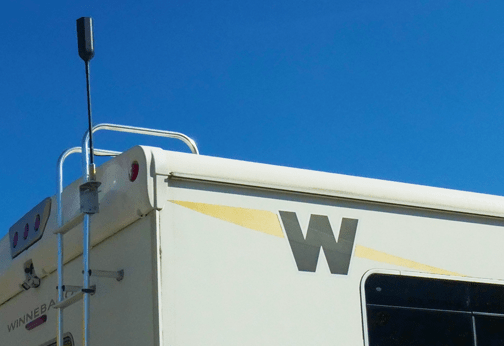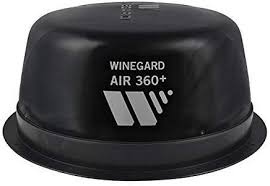Cell Booster Vs. External Antenna

If you are like many RVers and rural cellular internet users, maximizing the range and performance of your cellular device is top of mind. While 5G and advanced versions of LTE are becoming more common place is major cities, just getting coverage can be a challenge. But you might also be surprised how often ANY user can potentially benefit from a cell booster or external antenna.
If you do need need to give your cellular hotspot a signal boost – either due to poor signal, poor performance or both, cell boosters and external antennas can both be a great way to go. The real question is, which one is better? What are the pros and the cons? How difficult are they do use?
Cell Boosters


Unless you know you need to get every ounce of range or speed, you’ll want to consider a cell booster. A cell booster works with an external antenna. However, instead of boosting a single device it boosts the cellular performance of any devices within a short range. Cell boosters amplify the cellular signals they can reach via the external antenna. The big advantage is not only do they boost the performance of your cellular internet, they also boost the performance of your phones. Chances are if your cellular internet device is struggling with a cellular connection, so are your phones.
Another significant advantage of cell boosters is that they do not require a special device. Cell boosters can work with any hotspot device to provide improve cellular service. Not having to buy a special hotspot can save a lot of cost and hassle.
The disadvantages of a cell booster are cost and the potential performance limitations. While a cell booster can help you achieve a better cell connection, they may limit what is known as MIMO. What is MIMO? Essentially the newest cellular internet devices use multiple antenna to send and receive at the same time. Because boosters generally only have a single antenna, they ultimately may become a bottle neck. In our experience if you are in a rural area you are likely not achieving the highest speeds anyway, it may not be a negative. But if you are looking at a booster to dramatically increases speed, not coverage, you are likely to be disappointed.
In addition to the potential for a performance limitation, cell boosters are often pricey investments. They generally range $400-600 dollars, with the best and most flexible on the higher end of the range. While some of this cost is offset by not needing to buy a specialized device for an external antenna, it can be a significant investment for most cellular internet users.
Must Have Cell Booster Features
With cell boosters there are a few things to know. We recommend for internet performance not buying a booster without an external antenna or at least 50db of gain. Gain is the amount of signal “boost” the antenna gives. There are some antenna that boost beyond 50db as well, but often the higher gain antenna only work with a signal provider at a time.
RV/Van Considerations
Be sure to get a boosters that works while in motion, as well as ensuring it doesn’t require extra setup when switching between in motion and stationary. These devices may be useful if you need every little bit of boost and are willing to make the extra effort. However, if you just need an extra boost they add a lot of effort and complexity to something that is already complicated.
Another consideration is that most cell boosters require power (110V). So while a booster may work while driving down the road functionally, you would need an inverter/generator power.
Pros/Cons To Cell Boosters
| Pros | Cons |
| Do not require a special device | High cost ($400-600) |
| Boost any device cellular device, including phones | May not be able to achieve fastest speeds |
| Simple installation | Requires power |
External Antenna


While a cell booster generally requires an external antenna, you can also boost cellular internet signal with an external antenna even without a booster. This will require a hotspot device that can accept an external cellular connection. In order to achieve this you’ll need to make sure the external antenna and the hotspot you buy use the same connector, though in many cases adapters are available.
There are multiple advantages to going with an external antenna over a booster. First, is that most external antenna are passive. This means they are generally much less expensive than a booster, often in the $50-200 range, though the price can vary greatly. Another benefit, particularly for RVers is that they generally do not require external power. This means you run them and benefit without draining your batter, running a generator or being connected to external power.
Another significant advantage is the ability to support and benefit at the highest speeds. While achieving the fastest 4G and 5G speeds requires a special antenna. The fastest 5G and 4G LTE speeds are achieved using what is known as MIMO. What is MIMO? Essentially the newest cellular internet devices use multiple antenna to send and receive at the same time. In fact, they can use up to 4 (with 8 coming) antennas at once. In order to achieve these fast speeds, you’ll need a MIMO antenna that matches the number of channels of your hotspot device. This also means your hotspot device will need to have that many external ports.
The cons of an external antenna is the cost of the individual components can add up quickly. While there are finally relatively inexpensive hotspot devices with external antenna connections available, in most instances they are most expensive then their pocket sized peers. The hotspot devices and antenna that support MIMO can be a fairly expensive ($500-1000) combination. Still, if you have a device that already supports an external antenna or can purchase one relatively cheaply, the antenna themselves are generally pretty inexpensive.
Pros/Cons To External Antennas
| Pros | Cons |
| Can be lower cost | Requires matching hotspot device |
| Does not require external power* | Only benefits the device directly connected to it |
| Simple installation | May require adapters |
| Can achieve the highest speeds* | Product options vary substantially |
Which Is Right For You?
There is no “best choice” when comparing Cell Boosters and External antennas. While they both seek to improve cellular connectivity, they seek to solve the problem for different users. Cell boosters tend to be a better value and solution for those who already have equipment and when the need all types of cellular communication: internet, phone, text message. External antenna work best for those maximizing speed, seek lower cost (though only if they already own compatible equipment), or are only looking to boost the performance of one type of cellular communication: internet.
